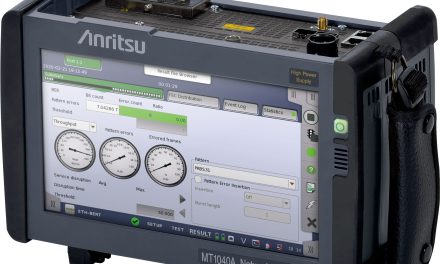![]() Roy Phillips, MD of Intelliconnect, discusses the evolution of a unique range of waterproof connectors, developed in response to the needs of a manufacturer of personal locator beacons to solve a problem no one else had been able to solve
Roy Phillips, MD of Intelliconnect, discusses the evolution of a unique range of waterproof connectors, developed in response to the needs of a manufacturer of personal locator beacons to solve a problem no one else had been able to solve
A market-leading manufacturer of Personal Locator Beacons (PLBs) approached Intelliconnect to see if they could help them with a problem they had been having when their beacons were being used by military aircrew. The problem manifested itself ultimately in a non-functioning beacon when the crewman had exited the aircraft or boat. This was difficult to understand as, like any other piece of emergency equipment, the PLBs were subjected to rigorous testing during manufacture and a further full functionality ‘shakedown’ test prior to dispatch of the equipment.
A thorough investigation of the way the beacons were being used was undertaken, and the problem finally identified. Prior to the aircrew bailing out of an aircraft, they would be inclined to nervously play around with the PLB antenna, and in some cases accidentally disconnect it from the beacon.
In-field design challenge
Upon bailing out, the PLB would then fill with seawater leaving the crew-member to wonder why rescue was taking longer than anticipated. With the PLB full of water its ability to transmit its location was severely limited and sometimes would fail to operate.
The challenge was set: to provide a mated pair of connectors that would be waterproof to IP/NEMA ratings (a minimum IP68/NEMA 6P) for up to 20m immersion for a minimum period of four hours in their unmated condition.
As standard with the company’s design approach, the complete system was looked at as a whole. In order to
provide a sealed connector, module and ease of assembly a TNC to MCX adaptor was designed. This enabled a separate umbilical link to be used inside the equipment, which greatly improved the flexibility of the manufacturing process.
The mating half needed careful consideration as the personal locator beacon was required to be used in confined spaces so a low profile TNC right-angle plug (again sealed to IP68), needed to be developed.
![]() GPS and transmitting antennas
GPS and transmitting antennas
Another part of the design brief required the manufacturer to take into account the requirement to attach additional GPS and transmitting antennas without them becoming connected to the wrong ports. For this requirement a solution was developed using standard and reverse polarity TNC connector designs, which would clearly indicate if attempts were made to wrongly connect them.
The final part of the system to be protected was the battery connector. By using the experience and knowledge gathered on the antenna connector design it was a relatively simple task to apply this ‘know how’ to the Nim-Camac connectors to be used and also seal these to ensure an IP68 rating in their unmated condition.
The final solution was the end result of taking a holistic approach to the complete system, rather than just looking at the connectors used. The end product featured a combination of O-rings, and proprietary methodology to protect the connector and thus the PLB from moisture ingress under immersion in seawater to a depth of 20m.
The result of rigorous testing by both the manufacturer and the customer has proven that the connector is able to protect the equipment to an equivalent depth of 60m, exceeding the original product requirements and providing the customer with a healthy threefold safety factor.
The standard method employed to test the connectors is to pressurise the connector itself with compressed air, immerse it in water and check for any air bubbles as a sign of leakage. This is simple enough to be used as an in- process step and can quickly and easily highlight any process or assembly problems.
In addition to the sealing needs, the connectors are designed to meet all the relevant Mil-specs, durability requirements; electrical, mechanical, and environmental conditions that all standard military equipment needs to withstand to be able to operate in an airborne or seaborne environment.
Multipurpose design solution
The manufacturer has incorporated this waterproofing process for TNC connectors into many of its other products including the N series, SMA, and custom designs such as the ABMS (an MCX ‘derivative’ used for a cochlear implant) and the MPNC four way multipin connector for use in an environmental corrosion monitoring system.
These connectors and adapters now form the ‘Pisces’ range and other applications include traffic monitoring systems, rail traction systems, military and aerospace applications, medical, marine radar, battery power, and corrosion monitoring for the oil and also the gas industry.


